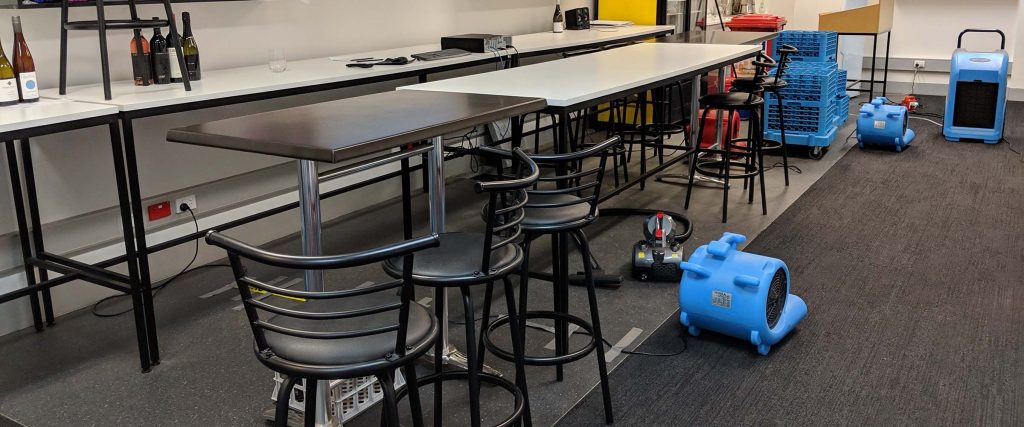The Importance of Rapid Response to Water Damage
The best way to reduce the amount of structural damage caused by indoor flooding to your property is to have a flood damage specialist commence remediation as soon as possible. When water infiltrates carpets, underlay, floating boards, timber floorings, ceilings and walls, it can cause them to become weakened and susceptible to mould growth if the water is not removed quickly. To prevent compromising the structures of your property we recommend calling an emergency water damage specialist to attend your property and begin extracting the water immediately and drying all affected structures. This will reduce the amount of water saturation and damage meaning that your home can be restored to pre-loss condition in a smaller amount of time.
Rapid Response
Mitigation should begin as soon as possible if the flooded area is safe to enter. This is because the longer water remains standing, the more it will be absorbed by the affected structures. Consequentially more time is required to dry these structures along with increased costs. Unfortunately some structures require replacement if they have been exposed to the water for too long because their function has been compromised permanently. Some examples of this include walls within properties that have had water damage for days along with mould growth. Even once the surfaces have been dried, the mould may be growing inside the walls and the water damage by this stage would have permanently damaged the structures. In these situations renovations may be required to restore the property. This is why preventing the amplification of water damage is essential with rapid response. In the case of emergencies always phone an emergency water cleanup company who can attend any time of the day, any day of the year.

Administrative Procedures
The next important step following the rapid response is to follow a set guide of administrative procedures to employ the right team of contractors to complete all necessary works. This involves the flood damage restorer taking initiative to maintain open communication with all other contractors involved in the restoration of the property and documenting works completed throughout the day. Importantly, they must identify what the drying goals are and what constitutes as project completion between the property manager, tenant or property owner. All planning and task allocation should take place before remediation begins to ensure the project goal is met in a timely manner with reduced damage to structures.

